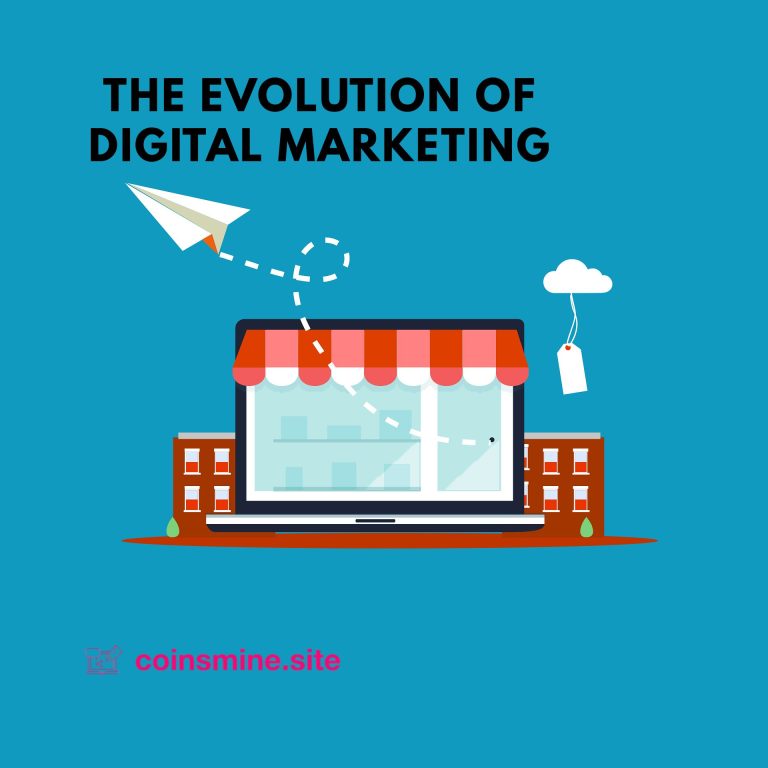The Evolution of Digital Marketing: Digital marketing has undergone significant changes in the last few decades, adapting to swift technological progress and evolving consumer habits. Starting with basic banner advertisements and static websites in the 1990s, it has transitioned to today’s data-driven, AI-enhanced campaigns, making digital marketing more engaging, tailored, and effective.
With the rise of search engines, social media, and mobile applications, marketers adjusted their strategies to reach audiences in the digital spaces where they spend their time. This introduction discusses the evolution of digital marketing from its beginnings to the advanced tactics observed today, enabling businesses to connect, engage, and succeed in a world that is becoming more digital.
The Evolution of Digital Marketing
Digital marketing has significantly progressed since its initial days of banner advertisements and mass email campaigns. With advancements in technology, shifts in consumer habits, and changes in online platforms, the methods businesses use to engage with their audiences have also transformed. From basic websites to analytics-driven, AI-enhanced marketing strategies, the evolution of digital marketing showcases the swift pace of digital change in our society.
In this piece, we will examine the crucial phases of digital marketing’s development, the significant changes that influenced it, and the ways it is still advancing today.
The Early Days: Static Websites and Email (1990s–early 2000s).
During this period, websites were simple and unchanging—functioning mainly as digital pamphlets. Businesses recognized the potential of websites to connect with customers worldwide.
Email marketing started to become popular during this time. Advertisers began distributing newsletters and promotional content to their subscribers. It was an economical approach that reached individuals directly, yet it did not have the level of personalization and automation that we have now.
A pioneering banner ad from AT&T gave rise to a new advertising method that would later evolve into a more targeted and dynamic approach.
The Emergence of Search Engines and Search Engine Optimization (early 2000s).
In the early 2000s, search engines such as Google, Yahoo, and MSN became prominent, transforming the way people accessed information on the internet. This change led to the emergence of Search Engine Optimization (SEO).
Pay-Per-Click (PPC) advertising also came onto the scene during this period, with the introduction of Google AdWords (now known as Google Ads) in 2000. This provided marketers the opportunity to bid for prominence in search engine results.
Websites evolved to be more advanced, and marketers began to understand the significance of user experience and web design.
Social Media Revolution (mid- to late 2000s).
Social media has transformed the marketing environment entirely. Services such as Facebook (2004), YouTube (2005), Twitter (2006), and LinkedIn (2003) have introduced innovative methods for brands to engage with their audiences.
Marketing transformed from simply delivering a message to engaging in a dialogue. Businesses were able to build communities, gather feedback, and cultivate loyal advocates. The term viral marketing gained popularity as content spread quickly through various networks.
This period highlighted the significance of interaction, genuineness, and content-driven marketing. Companies understood that sharing a narrative and delivering value could foster more robust connections and brand loyalty than aggressive selling by itself.
Mobile and Data-Driven Marketing (2010s).
As smartphones and mobile internet gained popularity, digital marketing evolved into a new era. Consumers were constantly connected online, prompting a need for marketing strategies to adjust to this change.
The necessity for mobile optimization grew, and mobile applications provided brands with innovative methods to connect with users. Social media marketing developed further, with Instagram (2010) and Snapchat (2011) bringing visual storytelling and influencer marketing into play.
The surge of data during this time also resulted in the rise of data-driven marketing techniques. Marketers were now able to monitor user actions, categorize audiences, and tailor content with unprecedented precision. Resources such as Google Analytics, Facebook Ads Manager, and CRM systems enabled brands to fine-tune their campaigns instantaneously.
Automation, AI, and Personalization (late 2010s–present).
As we transitioned into the late 2010s and beyond, automation and artificial intelligence started to become prominent. Platforms such as HubSpot, Mailchimp, and Salesforce enabled companies to automate routine tasks, cultivate leads.
Chatbots became widely used on websites and messaging applications, assisting companies with customer interactions around the clock. AI algorithms started driving various functions, including email subject lines, ad targeting, and product suggestions.
At the same time, content personalization has advanced significantly. Consumers now anticipate that brands will recognize their preferences and provide pertinent content when it’s most relevant, across various devices and platforms. This functionality is made possible through the application of big data, machine learning, and predictive analysis.
The Present and Future: Human-Centered and Ethical Marketing.
The current landscape of digital marketing is more sophisticated than it has ever been. Customers are concerned about privacy, genuine engagement, social principles, and moral business practices. Regulations such as GDPR and CCPA.
- Augmented and virtual reality experiences
-
Interactive content (quizzes, polls, AR filters)
-
Sustainability messaging and socially responsible branding
-
Strategies for zero- and first-party data as third-party cookies are being phased out.
Conclusion.
The progression of digital marketing mirrors larger changes in technology, communication, and consumer habits. What began with basic websites and email marketing has transformed into a complex, data-driven, and ever-evolving landscape.
As new tools and platforms are introduced, one element stays the same: the importance of human connection. Effective digital marketing in today’s world goes beyond merely achieving clicks and conversions—it’s centered around fostering relationships.



